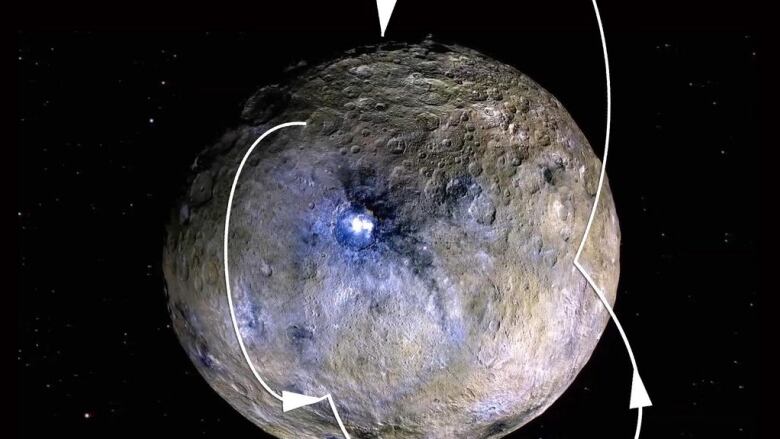Ice present 'everywhere' on dwarf planet Ceres
New studies based on data taken from NASA's Dawn spacecraft provide insight into ice in space

New studies using data fromNASA's Dawn spacecraft suggest that the largest body in the main asteroid belt has ice.
Early images from Dawn didn't show evidence of ice on Ceres, but further examination suggests that ice is on the surface, or at least near the surface.
Carol Raymond, the co-principal investigator, saidice has been on the surface of Ceres throughout the history of the solar system.
"By finding bodies that were water-rich in the distant past, we can discover clues as to where life may have existed in the early solar system," Raymond said.
The new study suggests that ice isn't found deep within Ceres.
"It's everywhere, and nearer to the surface with higher latitudes," said Thomas Prettyman, principal investigator of Dawn's gamma ray and neutron detector (GRaND).
Data collected by GRaND found that ice on Ceres isn't in a solid layer, but is more of a porous mixture of rocky materials where ice fills the pores. It makes up about 10 per cent of the mixture.
Survival of ice
"These results confirm predictions made nearly three decades ago that ice can survive for billions of years just beneath the surface of Ceres," Prettyman said. "The evidence strengthens the case for the presence of near-surface water ice on other main belt asteroids."
Other evidence supporting the existence of ice on Ceres is the concentration of hydrogen, iron, potassium and carbon, scientists said.
The theory is that as radioactive elements within Ceres decayed, heat was produced that separated the dwarf planet into a rocky interior and icy outer shell. This separation would result in differences in the chemical composition.
Scientists are looking to compare Ceres with meteorites that have also been altered by water.
A second study, published in Nature Astronomy, examined hundreds of craters on Ceres known as cold traps, where temperatures can dip to below 162 C. There, the ice can be preserved for a verylong time; even after billions of years, very little of it will turn into vapour.
Ice was confirmed in one partially sunlit crater, according to the study led by Thomas Platz of the Max Planck Institute for Solar System Research.
"We are interested in how this ice got there and how it managed to last so long," said co-author Norbert Schorghofer of the University of Hawaii. "It could have come from Ceres' ice-rich crust, or it could have been delivered from space."
The brightest parts of Ceres that appear to shinearen't bright because of ice, but from highly reflective salt particles, researchers say.












_(720p).jpg)


 OFFICIAL HD MUSIC VIDEO.jpg)
.jpg)



























































































